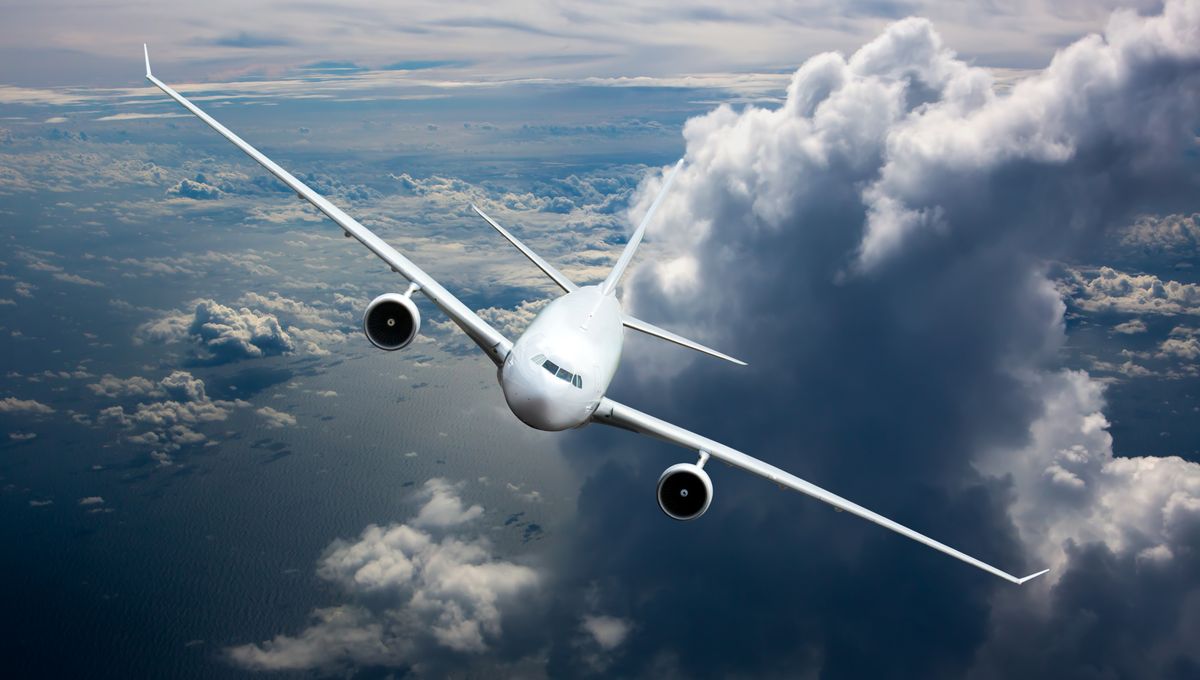
It has come to our attention that a few people out there are a little confused why flying against the rotation of the Earth does not speed up flight times.
In a post, admittedly by someone who denies that the Earth is spinning, a confused person writes:
“Plane flying from east to west at 300 mph… The Earth rotates from west towards east at 1,400 mph under the plane… How does the plane not reach its destination 1,400 mph faster? Nor is the return trip longer or shorter. How? Answer: The Earth is not spinning.”
This is, to be completely fair to the flat Earth group that wrote it, a hot mess of a post that assumes a lot of incorrect things about physics.
For a start, imagine you could take a really big jump up into the air (on a non-windy day, for simplicity) at the equator, where the Earth’s spin is around 1,670 kilometers per hour (1,037 miles per hour ). Let’s put you on a trampoline, and assume you can achieve airtime of around 3 seconds.
Where would you expect to land? If you subscribe to the flat-Earther’s understanding of physics, then your answer should be 1.39 kilometers (0.86 miles) to the west of your trampoline.
In their question, airplanes are somehow stationary in the air while the ground wizzes by beneath them at 1,670 kilometers per hour (1,037 miles per hour), or 27.83 kilometers per minute (17.29 miles per minute) and 0.46 kilometers per second (0.29 miles per second). By their – for want of a better word – logic, if you jumped into the air for a grand total of 3 seconds, this would place you 1.39 kilometers (0.86 miles) to the west of where you were before.
Now you’ll notice that the world isn’t filled with children flying off their trampolines and hurtling through the air at speeds faster than commercial airliners. This doesn’t happen. But not, as they suggest, because the Earth isn’t spinning.
You move with the Earth because of your inertia, or the tendency for objects in motion to remain in motion in a straight line at the same velocity unless another force acts upon them. This is why when you leap directly into the air, be it directly from the ground or inside a windowless truck, you land where you began.
Moving in another direction requires a force in that direction (e.g. jumping forwards, or an airplane expelling mass). Planes do not have magical properties that excuse them from inertia, and so when they take off from the spinning Earth they must expend energy to move you to (e.g.) Hawai’i.
Another misunderstanding in the post is assuming that our atmosphere is somehow static while the Earth spins beneath it. This is simply not the case. As the Earth spins, it drags most of our atmosphere along with it by frictional forces. If the atmosphere were not dragged with our planet, you could utilize the insane relative wind speeds to decrease flight time, but you’d probably not be concerned with such problems as “long flights” when you are being battered constantly by incredibly high winds every moment of your waking life.
In fact, flying west (against the rotation of the Earth) takes a little longer than flying east.
“The reason for quicker flights while flying eastwards is jet streams,” Simple Flying explains. “Put simply, these are fast-flowing, narrow air currents in the atmosphere found at high altitudes.”
This does have a little to do with the Earth’s rotation, as well as the atmosphere being heated by the Sun. The closer you are to the equator, the faster the Earth spins, and this affects jet streams.
“The closer you get to the poles, the smaller the track a point takes in its daily rotation,” NASA explains. “At 60° North or South latitude, the track is only half the distance that it is at the equator, and so a point travels only half as fast. Air (or water) moving from high latitudes to low then tends to lag, and a person on the surface would feel a wind blowing out of the east. On the other hand, air moving from low latitudes to high is deflected westwards. This also means that moving air or water is deflected to the right in the northern hemisphere, and to the left in the southern hemisphere.”
So the rotation of the Earth does (indirectly) affect flight times through its effect on wind speed and direction. But you cannot simply take the plane into the air and wait for the Earth to pass beneath you; we are not living in Looney Tunes.
All “explainer” articles are confirmed by fact checkers to be correct at time of publishing. Text, images, and links may be edited, removed, or added to at a later date to keep information current.
Source Link: People Are Confused Why Flying Against The Earth's Rotation Doesn't Speed Up Flights